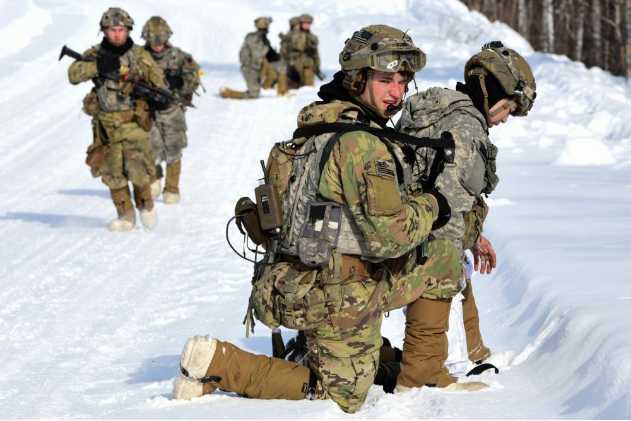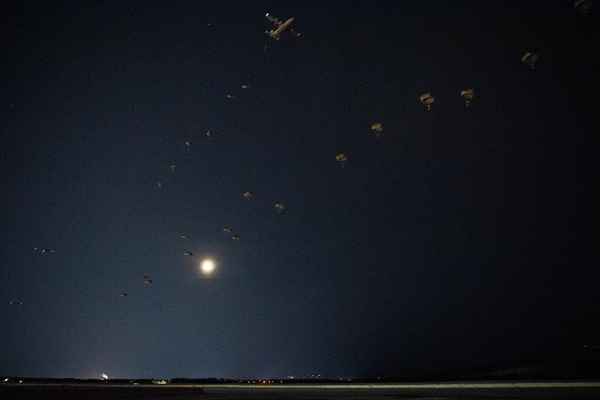A $1.9 million federal grant will allow the University of Alaska Fairbanks to expand its suicide prevention research by partnering with the Alaska National Guard and U.S. Coast Guard.

Assistant research professor and principal investigator James Morton Jr., UAF’s Military Health and Readiness Consortium Director Liz Mangini and Center for Alaska Native Health Research Director Stacy Rasmus gather at a workshop highlighting MIHRC’s partnership with the 11th Airborne Division in Fairbanks.
UAF’s Military Health and Readiness Consortium researches ways to improve protection against suicide while supporting an installation’s ability to execute its respective missions. The consortium is part of UAF’s Center for Alaska Native Health Research within the Institute of Arctic Biology.
Consortium researchers have already noted an increase in suicide prevention skills and knowledge in the U.S. Army’s 11th Airborne Division, with brigades based at Fort Wainwright in Fairbanks and Joint Base Elmendorf-Richardson in Anchorage. The division focuses on defending high-latitude and high-altitude homeland installations.
“Our inaugural research with the 11th Airborne Division draws on both CANHR’s successful collaboration approach with Alaska Native communities and purposeful leadership studies by Walter Reed Army Institute of Research,” said Liz Mangini, a program director with MIRHC. “This unique and innovative approach focuses on a partnership between military leadership and the university to collaborate on developing tools to positively affect the quality of life and mental health of the soldiers.”
Congress provided the additional funding specifically to target suicide prevention on rural, remote and isolated military installations.
“UAF is a military-friendly institution, and we know that many of our students are also military members or veterans,” said principal investigator and assistant research professor James Morton. “Here in Alaska, our military communities experience a disproportionate number of deaths from suicide and need science-informed innovations that strengthen our service members while protecting them from suicide risk.”
If you or someone you know is struggling with a mental health crisis, help is available at the national crisis line by calling or texting 988.
This research is being conducted by UAF, Louisiana State University and the U.S. Army Medical Research Directorate-West, part of the Walter Reed Army Institute of Research.
The U.S. Army Medical Research and Development Command under the Department of Defense provided financial support for the work.
[content id=”79272″]








